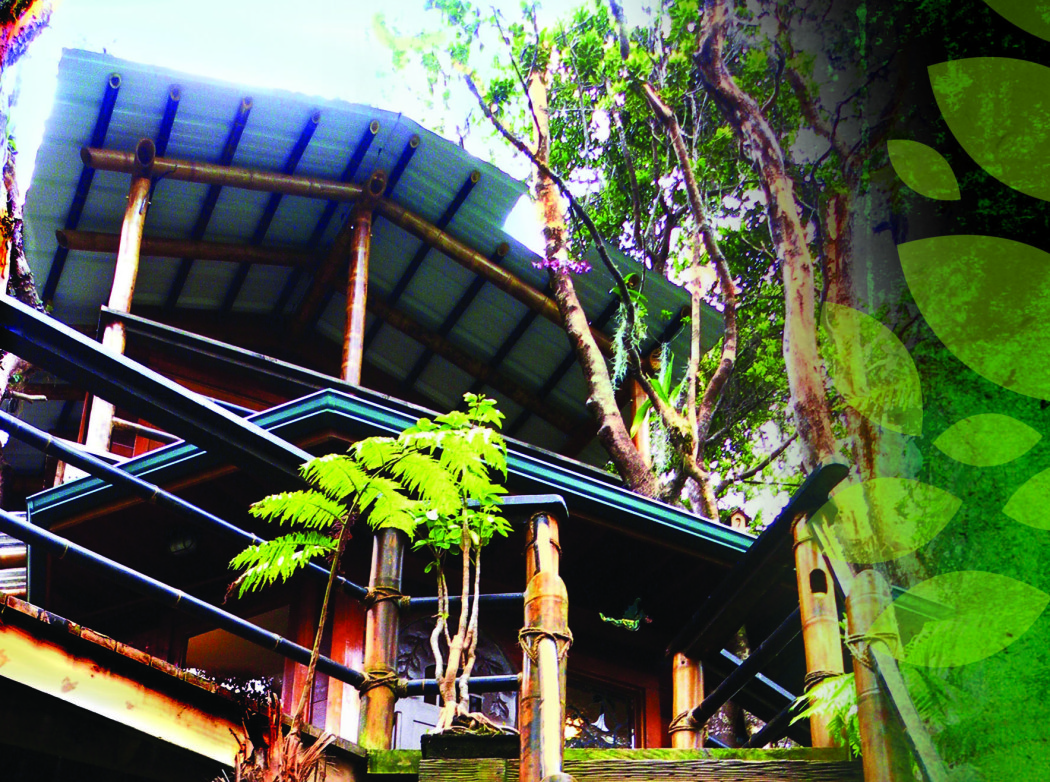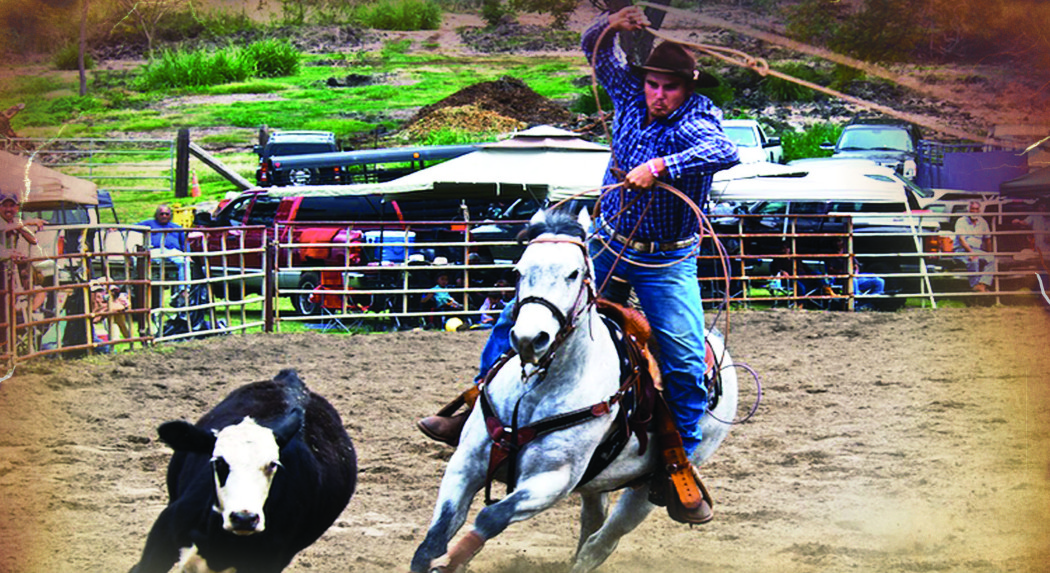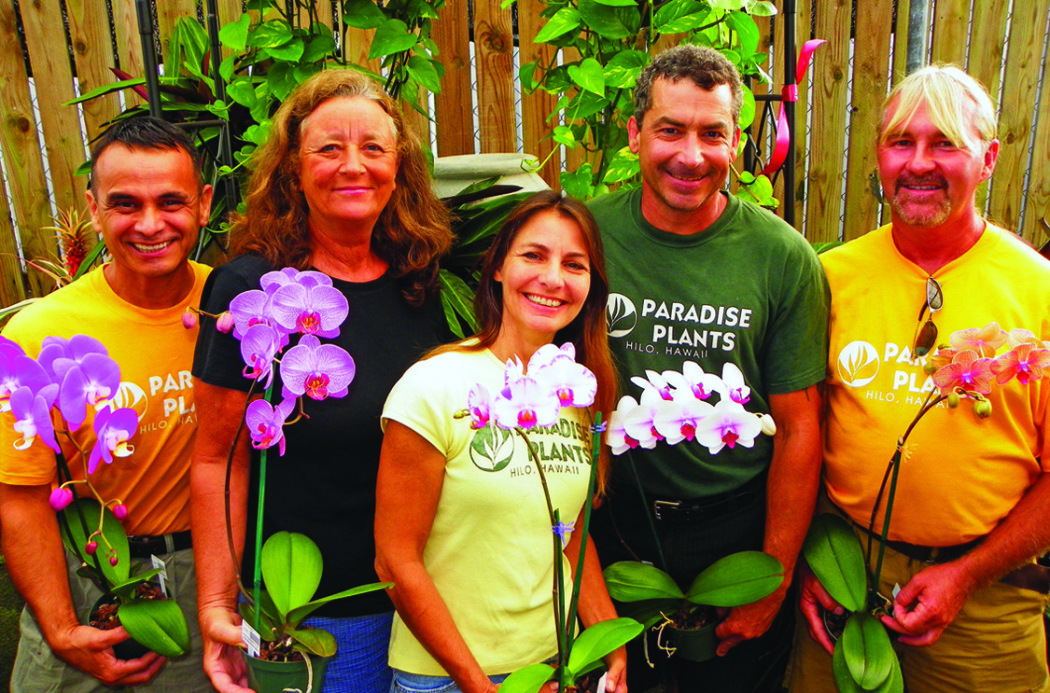
Volcano Tree House Takes “Green” to a New Level
 Devany Vickery-Davidson
Devany Vickery-Davidson
Tarzan and Jane never had it so good, nor did the Swiss Family Robinson. Nestled in the branches of several old-growth ‘ohia trees and perched above a lava tube in Volcano on the Big Island of Hawai‘i is an organic, hand-crafted, luxury tree house—the realized dream of Robert and Gail van Sluis.
The tree house is named Mahinui Na Lani after a Hawaiian phrase for “the beautiful sky.” It reaches up through the ‘ohia branches toward the heavens in the middle of a dense, green fern forest less than a mile from Volcanoes National Park. With an elevation of nearly 4,000 feet, this lofty setting is not your typical tropical version of Hawai’i—no white sandy beaches and swaying palm trees here. Yet in many ways, it seems closer to ancient Hawaiian history and culture than many locations on the island. Another name for the rainforest at this altitude, between 4,000 and 5,000 feet, is “cloud forest,” where the mist around you is actually clouds.
Hundreds of years ago, Kilauea spewed forth lava in wild and ravishing currents. As the lava flowed over what is now a dense rainforest, bubbles and tubes formed and hardened. The lava flowed through these tubes, as well as over land to the ocean, creating the island mass as it continues to do today. In one of those puka (Hawaiian for hole) or lava tubes, in the middle of a fern forest, ‘ohia trees grew in just the right formation to support what is now Mahinui Na Lani.
Gail and Robert came to the island in 2001 and purchased a home in Volcano, just a few blocks from where the tree house now sits. They offered the house as a vacation rental until 2009, when they could move permanently from Northern California to the Big Island. The dream for the tree house was percolating between the couple for quite a while before moving. In talking about their dream, they knew they wanted it to be an “all-green” building, even though it would take a great deal of effort and ingenuity to do so. As soon as they were settled, they began the process of actually building Mahinui Na Lani.
Each had differing ideas of what the tree-house style would be, Robert opting for the 21st-century amenities and Gail for romantic and artistic touches. Those ideas melded together eventually when they located Roderick Romero, an architect/builder from New York who specializes in building tree houses using 98-percent reclaimed and salvaged materials. Since 1997, Romero has designed and built structures around the world for such celebrities as Sting and his wife Trudy Styler, Val Kilmer and Donna Karan.
Construction started in July of 2009 and was completed in February of 2010. As planned, Mahinui Na Lani was built with green concepts and incorporated found materials. The walls, floors and siding of the tree house are all made from heart redwood and cedar which were once part of a church on O‘ahu. The heavy beams that hold the house together came from a demolished parking structure.
The house is held in the trees by an invention called a Garnier Limb. This device was created specifically for tree house construction and enables the bolts to become part of the living tree without damaging the tree itself. As the tree grows, the house actually becomes more stable and holds on even more firmly to the trees. It is a bit like the way of the cloud forest, where epiphytes (also known to us as “air plants”) in the trees grow on a host, but unlike a parasite, take no nutrients from the trees themselves. Their roots bond with the host and the symbiotic relationship continues to grow. The Garnier Limbs are held in place and connected to the house using a sophisticated system of guy wires. Eventually the Garnier Limbs become like an actual limb of the tree. The trees are allowed to move and sway in their own hula and thus the tree house does a bit of that gentle swaying in the wind as well. Each of the Garnier Limbs is designed to support as much as 30,000 pounds.
Much of the construction was done by Hawai‘i Island resident and bamboo expert Bobby Grimes, along with the designer/architect Roderick Romero. Some of the bamboo timber used on the project was golden bamboo called guadua, which came from Columbia. The black bamboo was grown and harvested in Ninole on the east side of the Big Island. The joints used in connecting the bamboo are called fish-mouth joints. Each one is custom cut to fit around the adjoining piece of bamboo. Bobby Grimes is now developing a bamboo timber farm on the north part of the island so that many kinds of bamboo timber can be sourced locally.
The one-bedroom tree house has a composting toilet and an outdoor shower supplied by solar-heated rainwater. The entire structure is off the grid, with electrical power coming from a battery bank that is supported by solar energy and a generator. Eventually, there are plans to add a vertical wind turbine so that the generator will be used less.
Mahinui Na Lani is now a vacation rental enjoyed by people from around the world. Some are newlyweds and others come just to experience the tree house.
When guests arrive at the tree house, they first walk through a custom-made “moon gate.” A meandering path leads past plantings, carvings and natural growth, past an opening to the lava tube, to the ladder steps ascending to the first floor of the tree house. Suitcases are not allowed because of the steep climb up to the house and the respect for the wood floors of the structure, so items are transferred into backpacks or bags to carry up to the tree house.
Once visitors reach the first landing, they begin to understand how special is the view and the feeling of being amongst the branches. On the landing, a sunken cedar hot tub, a grill and seating area offer amenities, and most of this lanai is covered for protection by an artisanal bamboo structure of beams and roof. You enter the tree house through a very old, arched Balinese door. Once inside, light floods in through windows and accentuates the beautiful, stained-glass art by local artist Seneca La Londe, installed on several windows. There is a small, practical kitchen.
For warmth on those chilly Volcano nights, a Jotul propane stove from Norway serves as a fireplace and heats the room to a cozy temperature. There is access to the powder room and the outdoor shower from the living space.
Up the ladder and through the trap door is the bedroom where more stained glass art continues the theme of Hawaiian flora and fauna. There is a second lanai with chairs for viewing the
rainforest.
If you happen to be an MTV fan, the tree house was recently filmed for an episode of MTV’s
show “Cribs. “ ❖
Resources
For more information on the tree house, vacation rentals, wedding resources and tours offered by Gail Armand and Robert Van Sluis, please go to: www.mahinui.com
For more information on Roderick Romero’s creations, go http://romerostudios.com
For bamboo structures and design, visit Bobby Grimes at biodynamichawaii@gmail.com
Contact writer Devany Vickery-Davidson at pineappleprincess@hawaii.rr.com.


